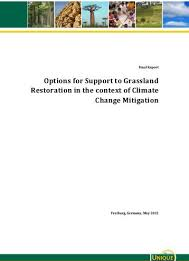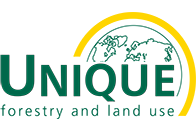Resource information
This report reviews the options for support to grassland restoration in the context of demand growth for livestock products and climate change mitigation. Key messages are: Grasslands provide crucial economic, social and environmental outputs Gasslands cover a total of 52.5 million km2 , or about 40% of the world’s ice-free terrestrial surface area. Extensive grasslands contribute about 7% of global beef production, 12% of sheep and goat meat production and 5% of global milk supply. Hence, this land-use type makes a significant contribution to the supply of livestock products, the food security status of livestock keepers and national economic development. Grasslands provide also a range of environmental services, including carbon sequestration, and are critical and highly threatened ecosystems for biodiversity conservation. Restoring value to grasslands should focus on the sustainable intensification of production and environmental outputs Despite the provision of multiple services there is widespread underinvestment in grasslands, leading to a situation where based on best but rough estimates 50% of grasslands are degraded. Therefore, there seems to be an overarching consensus to focus efforts on sustainable intensification with the dual focus on production and environmental outputs. The synergies and trade-offs between the two desired outputs are site specific. The condition of the natural resource base, market access and other context-specific factors determine the livelihoods options available to grassland users. Low carbon development is a co-benefit of sustainable intensification Soil carbon sequestration and reducing production related emissions will be important cobenefits of sustainable intensification and key elements of a low carbon development strategy in agriculture-dominated countries or regions. Climate finance may add important marketoriented and political resources, and act as a convening force for sustainable intensification. Climate benefit and performance monitoring might improve the efficiency and effectiveness of related investments. However, GHG emission reductions may not always be a suitable indicator of improved environmental and development outcomes in pastoral areas. In non-equilibrial arid and semi-arid rangelands, for example, GHG emissions may be less responsive to change in management than to climatic variability. Coalition to restore value to grasslands to support pastoral identities Pastoral interests are in general not well represented in many countries and the scientific basis for sustainable intensification options and their impacts are variable across grassland types and production systems. Furthermore, framing of issues and solutions with a well-considered climate perspective may be a lengthy process. This highlights the need for broad coalition building for a grassland valuation strategy, and knowledge sharing combined with pilot actions to establish proof of concept for innovative sustainable intensification pathways.



